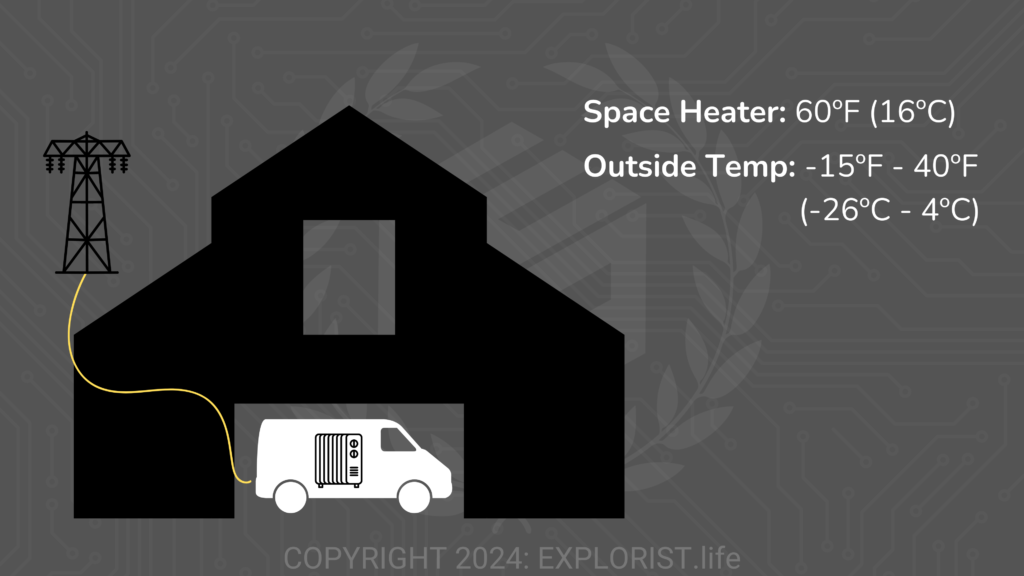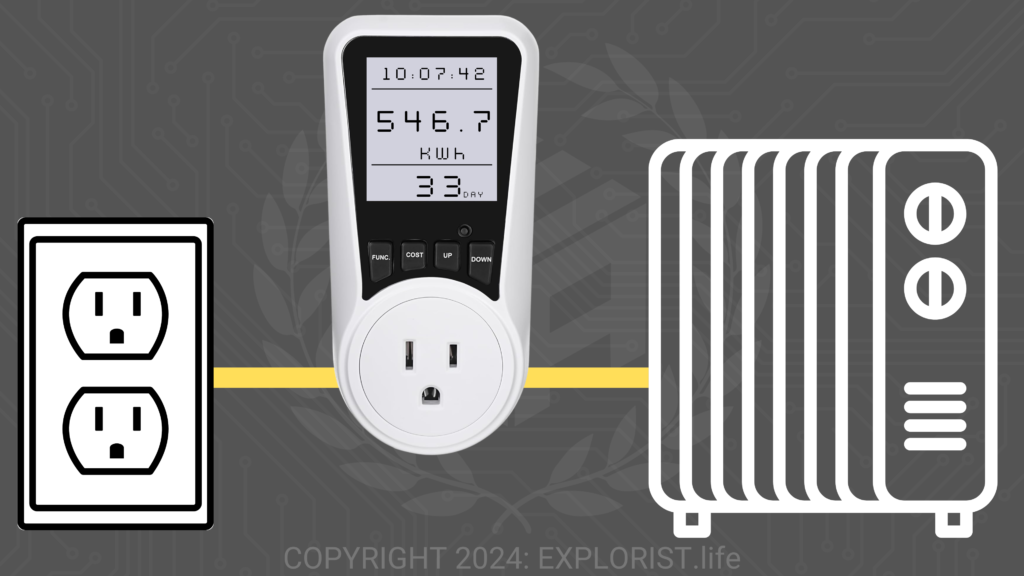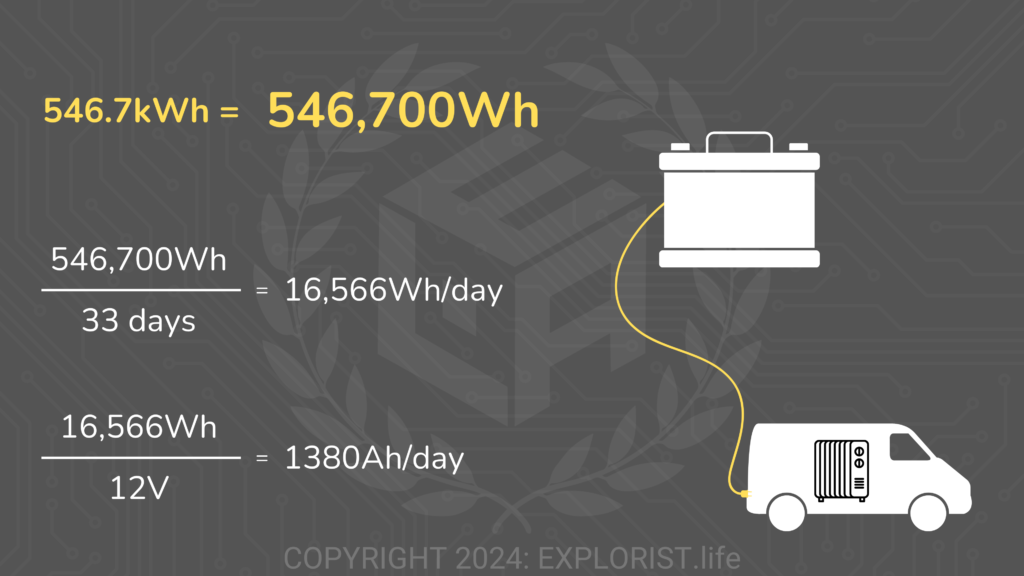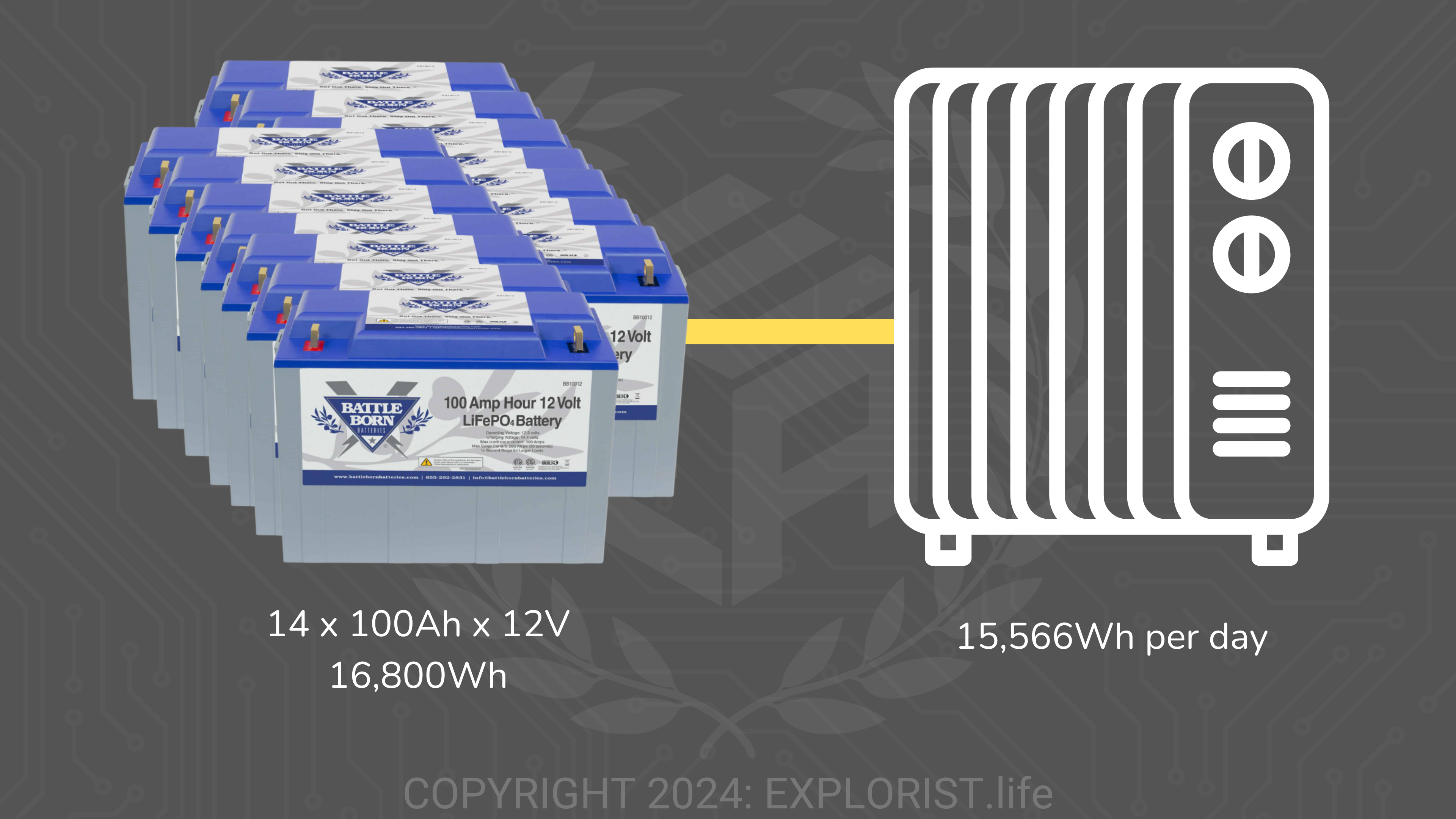
If you spend any time at all looking up information about running an electric space heater in a mobile, marine or off-grid electrical system; you’ll quickly find no shortage of people saying that it is a bad. Idea.
I’ve been running an electric space heater in our van that is connected to shore power for the last month or so and I’m going to share the data behind why off-grid electric heating is a bad idea here in lesson #5 of this Electrical System Sizing Chapter of the EXPLORIST.life Mobile, Marine, and Off-Grid Electrical Academy.

Calculating Electric Space Heater Power Consumption VIDEO
{{COMING SOON}}
How much power does a space heater use to run?
I have a space heater that is rated for 1500 watts; this means that when it is operating at full capacity, it is going to pull those 1500 watts from the power source.
Most space heaters more expensive than 15 bucks have a thermostat in them so you can set a temperature and the heater will cycle off and on to keep the room at that set temperature.
Although we ‘could’ say that:
“Our space heater uses 1500W and I’ve observed that it runs for 20 minutes then turns off for 20 minutes, turns back on for 20, and back off for 20”
But that ‘may’ not be the case across the board and is pretty hard to observe consistently unless you’re just sitting there with a stopwatch, which I don’t have the time nor attention span for, so here’s what I’ve done:
Over the last month, I’ve had our van parked in an unheated barn, connected to shore power.
And to keep everything from freezing, I’ve kept a space heater in there set to 60 degrees.
The temperature in the barn has ranged anywhere from -15 degrees to 40 degrees fahrenheit; and the van hasn’t had sunlight on it, so it isn’t getting any kind of daytime solar heating coming through the body of the van.

Here are the results.
The test ran for 33 days
The heater was set to ‘low’ which means that it was drawing 665 watts while it was actively heating and 0 watts while it was not actively heating.
Over those 33 days, the space heater used 546.7 kWh of power, pulled from shore power.
So… if we DIDN’T have shore power and this space heater was pulling power from an off-grid battery bank, how much power would it pull every day?

546.7 kWh is 546,700Wh
546,700Wh / 33 days of run time = 16,566 Wh per day, on average.
If this were being pulled from a 12V battery bank, that would be 16,566Wh / 12V = 1,380 amp hours used per day, just for the space heater.

This means that it would take 14x 100Ah 12V Batteries to keep this heater running every day.
Which, regardless of battery manufacturer, that is a LOT of money in batteries.

This doesn’t even include how much solar it would take to re-charge that kind of battery usage, which would be north of 2800W; and since solar gain during the winter is below-average; it’d realistically be more than that.
So, this is why electric space heaters are usually not recommended for mobile, marine, or off-grid electrical systems
What about more efficient space heaters?
Well, space heaters are nearly 100% efficient by design. Nearly all of the wattage that they pull is converted to watts of heat output. So the only way to have an electric space heater pull less watts is to have it put out less watts of heat. And less watts of heat equals less heating; so that’s really not an option and why fuel burning heaters like an Espar Diesel heaters, propane furnaces, or wood burning fireplaces are more common and generally more appropriate heaters for off-grid applications.
Conclusion
I know this was a short article, but it was something I get asked about a LOT and I wanted to make sure it was covered before moving forward in this academy.
